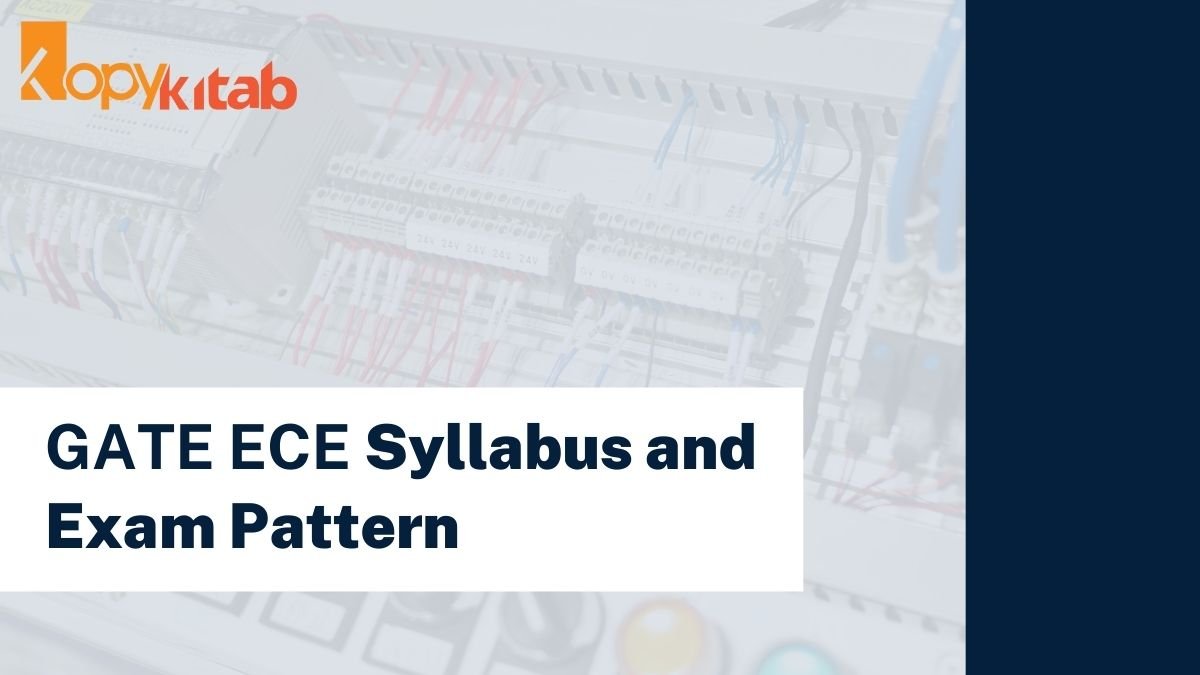
GATE ECE Syllabus and Exam Pattern 2022: All the candidates applying for the GATE Electronics and Communication Exam 2022, must know the detailed GATE Electronics and Communication Engineering Syllabus 2022. It is important to know and understand the GATE Syllabus 2022 before the main exam.
In this blog we will talk about the GATE ECE Syllabus and Exam Pattern 2022. To know more about it, read the complete blog.
GATE Electronics and Communication Engineering Syllabus and Exam Pattern 2022
The GATE Electronics and Communication Engineering syllabus 2022 consists of section-wise topics. Knowing the GATE syllabus for ECE will help candidates in making a good preparation strategy which will help them achieve the desired goals.
As per the syllabus guidelines available on the official website, Electronics and Communication Engineering Syllabus has eight sections: Engineering Mathematics, Networks Signals and Systems, Electronic Devices, Analog Circuits, Digital Circuits, Control Systems, Communications and Electromagnetics.
Here you can check the latest GATE ECE Syllabus and Exam Pattern 2022.
GATE ECE Syllabus 2022
Here we will get to know about that the GATE ECE Syllabus includes questions based on Verbal Ability and Numerical Ability. There are different topics included in the GATE General Aptitude Syllabus.
| TOPICS | SYLLABUS |
| Verbal Ability | English grammar, sentence completion, verbal analogies, word groups, instructions, critical reasoning and verbal deduction. |
| Numerical Ability | Numerical computation, numerical estimation, numerical reasoning and data interpretation. |
Section Wise GATE Electronics and Communication Engineering Syllabus 2022
There are 8 sections of GATE Electronics and Communication Engineering Syllabus 2022, and their syllabus is mentioned below:
| SECTIONS | SYLLABUS |
| Engineering Mathematics |
|
| Networks, Signals, and Systems |
|
| Electronic Devices |
|
| Analog Circuits |
|
| Digital Circuits |
|
| Control Systems |
|
| Communications |
|
| Electromagnetics |
|
GATE ECE Exam Pattern 2022
Here you can check GATE Electronics and Communication Engineering Exam Pattern 2022.
|
GATE Exam Structure |
Details |
|---|---|
|
Number of sections |
General Aptitude and the choice of engineering branch |
|
Duration of exam |
180 minutes (60 minutes per section) |
|
Sections |
Aptitude Engineering, Mathematics, Subject-specific questions |
|
Language of question paper |
English |
|
Number of answer choices |
4 choices in the case of MCQ No choices in the case of NAT |
|
Mode of examination |
Online (Computer-based test) |
|
Marking scheme |
Multiple Choice Questions (MCQs) – +1 & 2 marks for the correct answer; 1/3 mark will be deducted for 1 mark questions and 2/3 mark will be deducted for 2 marks questions Numeric Answer Type (NAT) – +1 & 2 marks for the correct answer; no negative marking |
Other Important Information for GATE Electronics and Communication Engineering 2022 Exam
Click on the link to access other information & study materials related to the GATE 2022 exam.
| GATE Electronics and Communication Engineering Question Papers |
| GATE Electronics and Communication Engineering Exam Analysis |
Topic-wise Weightage For GATE ECE Syllabus for 2022
Based on the previous years’ trend, the topic-wise weightage for the GATE ECE paper has been tabulated below:
| Subjects | Number of 1 Mark Questions | Number of 2 Marks Questions | Total Marks | Weightage Analysis |
|---|---|---|---|---|
| Analog Circuits | 3 | 2 | 7 | 7% |
| Electronic Devices | 2 | 2 | 6 | 6% |
| Control Systems | 1 | 2 | 5 | 5% |
| Digital Circuits | 3 | 3 | 8 | 9% |
| Networks Theory | 2 | 5 | 12 | 12% |
| Engineering Mathematics | 5 | 4 | 13 | 13% |
| General Aptitude | 5 | 5 | 15 | 15% |
| Signal & Systems | 4 | 3 | 10 | 10% |
| Communication | 3 | 5 | 13 | 13% |
| EMTL | 2 | 4 | 10 | 10% |
We have provided complete details on GATE ECE Syllabus 2022. If you have any queries, feel free to ask us in the comment section below.
FAQs On GATE ECE Syllabus 2022
Here you can check FAQs On GATE ECE Syllabus 2022.
What is the GATE ECE Exam Pattern 2022?
You can find the GATE EXE Exam Pattern 2022 in the above blog.
What are the subjects in the GATE ECE Syllabus 2022?
GATE Syllabus for ECE 2022 will have questions in 3 different sections, Engineering Mathematics, General Aptitude, and Core ECE subjects.
Which are the most important subjects in the GATE Syllabus for ECE 2022?
The topic which has the highest weightage in the GATE Syllabus for ECE 2022 is Manufacturing Science, as at least 10 questions are asked on average.
Which are the topics in the core subject of the GATE Syllabus for ECE 2022?
The topics in the core subject of GATE Syllabus for ECE 2022 are as follows:
Networks, Signals, and Systems
Electronic Devices
Analog Circuits
Digital Circuits
Control Systems
Communications
Electromagnetics
How many questions are asked in GATE Electronics and Communication Engineering 2022?
GATE Electronics and Communication Engineering Question paper will have a total of 65 questions, out of which approximately 45 questions will be ECE Core Subject Questions.
What is the paper code for GATE Electronics and Communication Engineering 2022?
The paper code for GATE Electronics and Communication Engineering 2022 is EC.
Which are the best GATE Books for Electronics and Communication Engineering 2022?
The best GATE Books for Electronics and Communication Engineering 2022 are as follows:
Microelectronic Circuits: Theory and Applications by Adel S. Sedra, Kenneth C. Smith, Edition: 6
Fundamentals of Electric Circuits by Charles K. Alexander, Matthew N. O. Sadiku, Edition: 5
Automatic Control Systems by Benjamin C. Kuo, Edition: 9
How to prepare for completing the GATE ECE Syllabus 2022?
Candidates can follow some of these tips for preparation of GATE Instrumentation paper:
Solve GATE Electronics and Communication Engineering Mock Tests
Start with the basic concepts or topics.
Candidates must practice virtual calculators so that they can develop a habit of using the same.
How much time is required for the GATE Syllabus for ECE 2022?
On Average, candidates take at least 6 months to complete the GATE Syllabus for ECE 2022.
Which subject can be taken along with GATE for Electronics and Communication Engineering 2022?
Candidates choosing EC as their first paper can either sit for IN or PH as their second paper.

